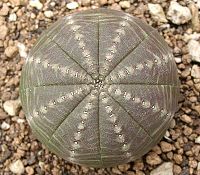
Photo from wikipedia
Abstract Fungal chitinases are hydrolytic enzymes responsible for degradation of chitin. Chitinases are involved in several aspects of fungal biology, including cell wall remodelling during hyphal growth, conidial germination, autolysis,… Click to show full abstract
Abstract Fungal chitinases are hydrolytic enzymes responsible for degradation of chitin. Chitinases are involved in several aspects of fungal biology, including cell wall remodelling during hyphal growth, conidial germination, autolysis, mycoparasitism and nutrient acquisition. They are divided into three distinct phylogenetic groups; A, B and C. Chitinases from the C group show structural similarities with the killer toxin zymocin produced by the yeast Kluyveromyces lactis and it is speculated that they have a similar function in filamentous ascomycetes, by facilitating penetration of toxins into cells of competing individuals. Genome analyses show that certain fungal species with a mycoparasitic lifestyle contain high numbers of killer toxin-like chitinases, compared with specialized saprotrophs and plant pathogens. Recent developments within this research field have revealed considerable variation in the modular structure and regulation of killer toxin-like chitinases, suggesting more diverse roles than merely fungal-fungal interactions. In this review, we summarize the current knowledge about this intriguing class of chitinases, including their modular structure, evolution, gene regulation, and functional analyses in mycoparasitic as well as in saprotrophic species. We also propose important questions for future research.
Journal Title: Fungal Biology Reviews
Year Published: 2019
Link to full text (if available)
Share on Social Media: Sign Up to like & get
recommendations!